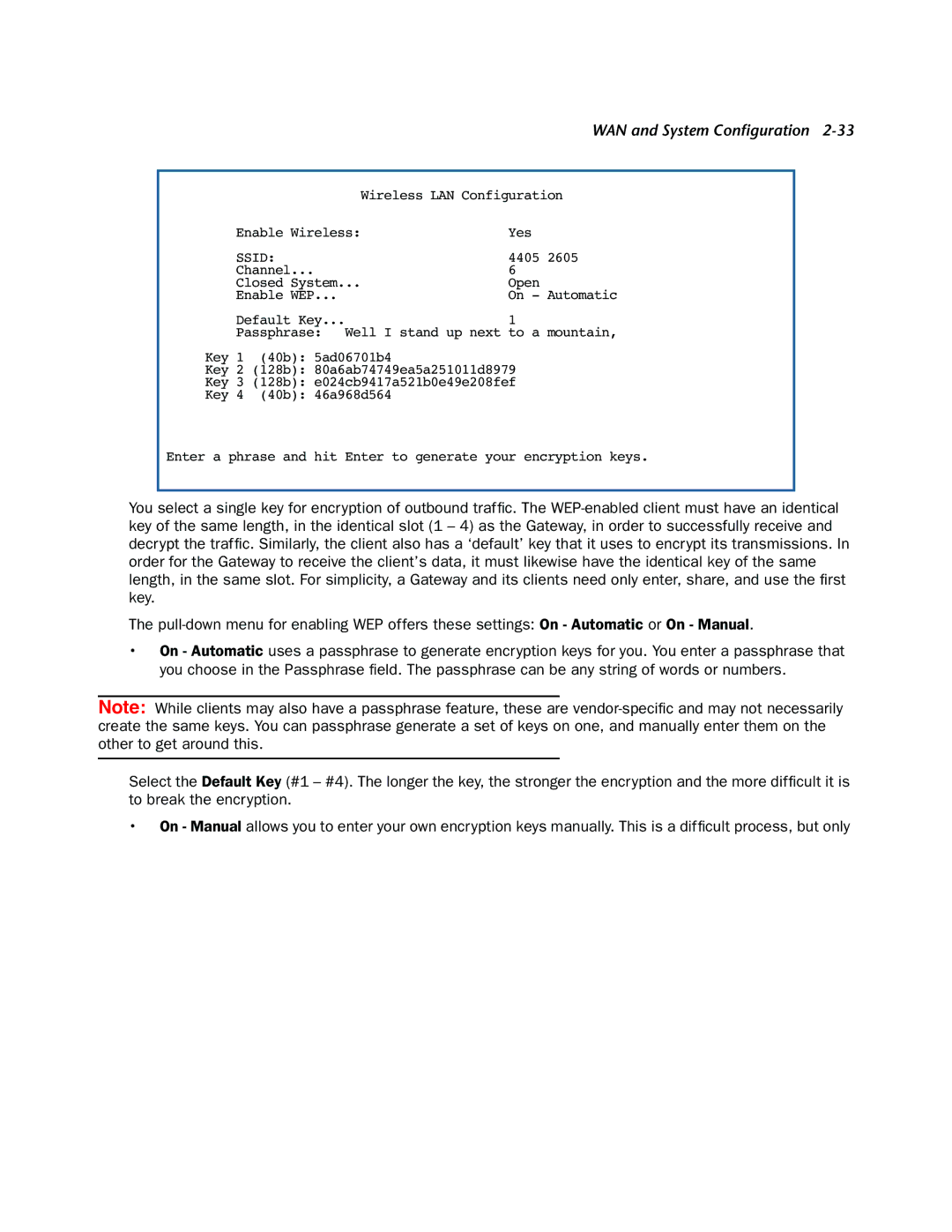
WAN and System Configuration 2-33
| Wireless LAN Configuration | |
Enable Wireless: | Yes | |
SSID: | 4405 2605 | |
Channel... | 6 | |
Closed System... | Open | |
Enable WEP... | On - Automatic | |
Default Key... | 1 | |
Passphrase: Well I stand up next to a mountain, | ||
Key 1 | (40b): 5ad06701b4 |
|
Key 2 | (128b): 80a6ab74749ea5a251011d8979 | |
Key 3 | (128b): e024cb9417a521b0e49e208fef | |
Key 4 | (40b): 46a968d564 |
|
Enter a phrase and hit Enter to generate your encryption keys.
You select a single key for encryption of outbound traffic. The
The
•On - Automatic uses a passphrase to generate encryption keys for you. You enter a passphrase that you choose in the Passphrase field. The passphrase can be any string of words or numbers.
Note: While clients may also have a passphrase feature, these are
Select the Default Key (#1 – #4). The longer the key, the stronger the encryption and the more difficult it is to break the encryption.
•On - Manual allows you to enter your own encryption keys manually. This is a difficult process, but only
